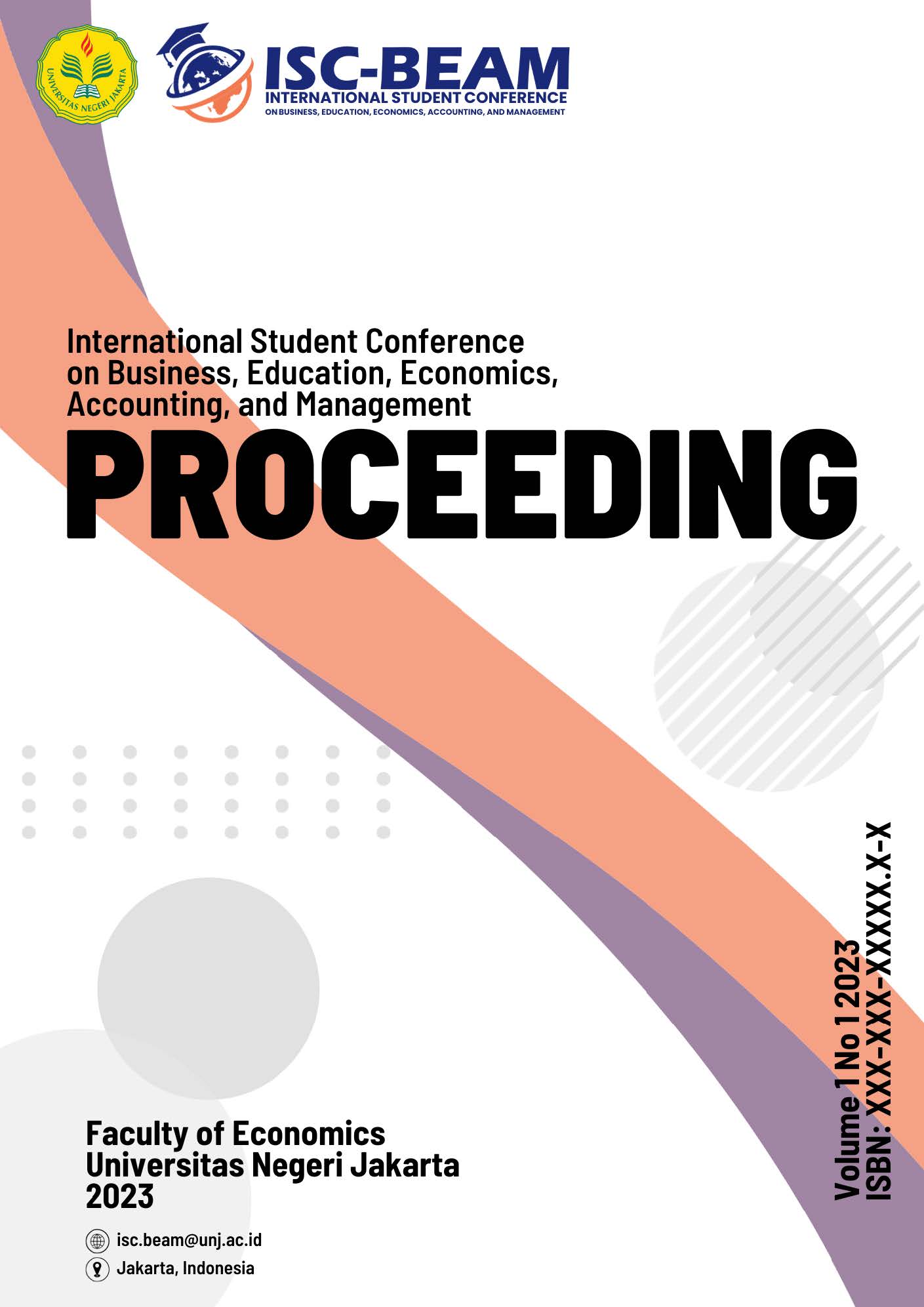The Determinants of Turnover Intention in the Public Healthcare Sectors Malaysia: A Conceptual Paper
DOI:
https://doi.org/10.21009/ISC-BEAM.011.68Keywords:
Turnover Intention, Job Demand, Work-life Balance, Workload, Working Hours, Public Healthcare SectorAbstract
This study investigates several factors that influence nurses' intentions to depart from their
professions in the Malaysian public healthcare system. The research explores the complex
interplay of determinants contributing to turnover intention among nurses in the public
healthcare sectors. This academic inquiry seeks to contribute deeper understanding of the
underlying explanations caused nurse retention in public healthcare sectors in Malaysia.
Various factors impact nurse turnover intention in Malaysia, including work-related, personal,
and organizational aspects. These factors have been identified in several studies and can impact
the retention of nurses in the healthcare industry. Understanding and addressing these factors
are crucial for public healthcare sectors to improve nurse retention and provide better quality
of care. Hence, the main concern of this research is to examine the association between job
demand, work-life balance and turnover intention among nurses in public healthcare sectors.
This study contributes to the existing body of knowledge on factors influencing turnover
intention among nurses in public healthcare sectors in the context of Malaysian nurses. The
findings underscore the need of addressing the causes of work-life balance concerns, such as
workload, working hours, and workplace quality, in order to increase nurse retention and,
ultimately, nursing care quality. By understanding the relationship between job demand, worklife balance and turnover intention, Malaysian public healthcare sectors can create a favorable
work environment to encourage nurse retention and improve patient outcomes.
References
Ahmad Saufi R, Aidara S, Che Nawi NB, PermarupanPY, Zainol NRB, Kakar AS. Turnover intention and its antecedents: The mediating role of work-life balance and the moderating role of job opportunity. Front Psychol. 2023 Apr 3;14:1137945. doi: 10.3389/fpsyg.2023.1137945. PMID: 37077854; PMCID: PMC10108846.
Bakker, A.B.; Demerouti, E. (2007). "The Job Demands-Resources model: State of the art". Journal of Managerial Psychology. 22 (3): 309–328. doi:10.1108/02683940710733115.
Flinkman M, Salanterä S. Early. Career experiences and perceptions–a qualitativeexploration of the turnover of young registered nurses and intention to leave the nursing profession in Finland. J Nurs Manag. 2015;23(8):1050–7.
Hassi, A., & Storti, G. (2011). Organizational training across cultures: Variations in practices and attitudes. Journal of European Industrial Training, 35(1), 45-70.
Hofstede, G. (1984). Culture's consequences: International differences in work-related values. . Beverly Hills, CA: Sage.
Kakar, A. S., Rauza, D., Raziq, A., Akhtar, T., and Mohammad, N. (2023). Person‐organization fit and turnover intention: The mediating role of need‐supply fit and demand‐ability fit. Global Business and Organizational Excellence. doi: 10.1002/joe.22198
K.B. Wright, W. Riemann, C.L. Fisher. Work–life-imbalance during the COVID-19 pandemic: exploring social support and health outcomes in the United States. J Appl Commun Res, 50 (1) (2022), pp. 54-69, 10.1080/00909882.2021.1965186
Kopelman, R. E., Brief,A. P., & Guzzo, R. A. (1990). The role of climate and culture in productivity. In B. Schneider (Ed.), Organizational Culture and Climate (pp. 282318). San Francisco: Jossey-Bass.
Korunka C, Hoonakker P, Carayon P. Quality of Working Life and TurnoverIntention in Information Technology Work. Human Factors and Ergonomics in Manufacturing 2008; 18: 409-23.
Merriam, S. B., & Mohamad, M. (2000). How cultural values shape learning in older adulthood: The case of Malaysia. Journal of Adult Education Quarterly, 51(1), 4563
MoustaqKarim Khan Rony, Sharker Md. Numan, Hasnat M. Alamgir. The association between work-life imbalance, employees' unhappiness, work's impact on family, and family impacts on work among nurses: A Cross-sectional Study, Informatics in Medicine Unlocked, Volume 38, 2023, 101226, ISSN 2352-9148,(https://www.sciencedirect.com/science/article/pii/S2352914823000680)
Muzaffar, S., and Javed, U. (2021). Training and development opportunities and turnover intentions post Saudization—Palarch’s. J. Archaeol. Egyptol. 18, 521–531.
Ng LP, Chen IC, Ng HF, Lin BY, Kuar LS. Influence of job demands and job control on work-life balance among Taiwanese nurses. J Nurs Manag. 2017 Sep;25(6):438-448. doi: 10.1111/jonm.12482. Epub 2017 Apr 16. PMID: 28419626.
Shaikh, Maria & Shaikh, Sumra & Benghal, Ghazala & Shaikh, Haseeb & Syed, Nadeem. (2020). Impact of Turnover on Organizational Efficiency: A Case Study of Dawlance Company. Annals of Contemporary Developments in Management & HR. 2. 20-28. 10.33166/ACDMHR.2020.02.003. Smith, W. A. (2003). Culture and Management in Asia. London: Routledge Curzon.
Schermerhorn, J. R., & Bond, M. H. (1997). Cross-Cultural Leadership Dynamics in Collectivism and High Power Distance Settings. Journal of Leadership & Organization Development 18(4), 187-193.
Triandis, H. C., Brislin, R., & Hui, C. H. (1993). Management, Organization & Culture: In East and Southeast Asia. Casuarina NT: Northern Territory University Press.
Vadivelu, R. N., & Klein, J. D. (2011). The influence of national and organizational culture on the use of performance improvement interventions. Journal of Performance Improvement Quarterly, 24(1), 97-115.






